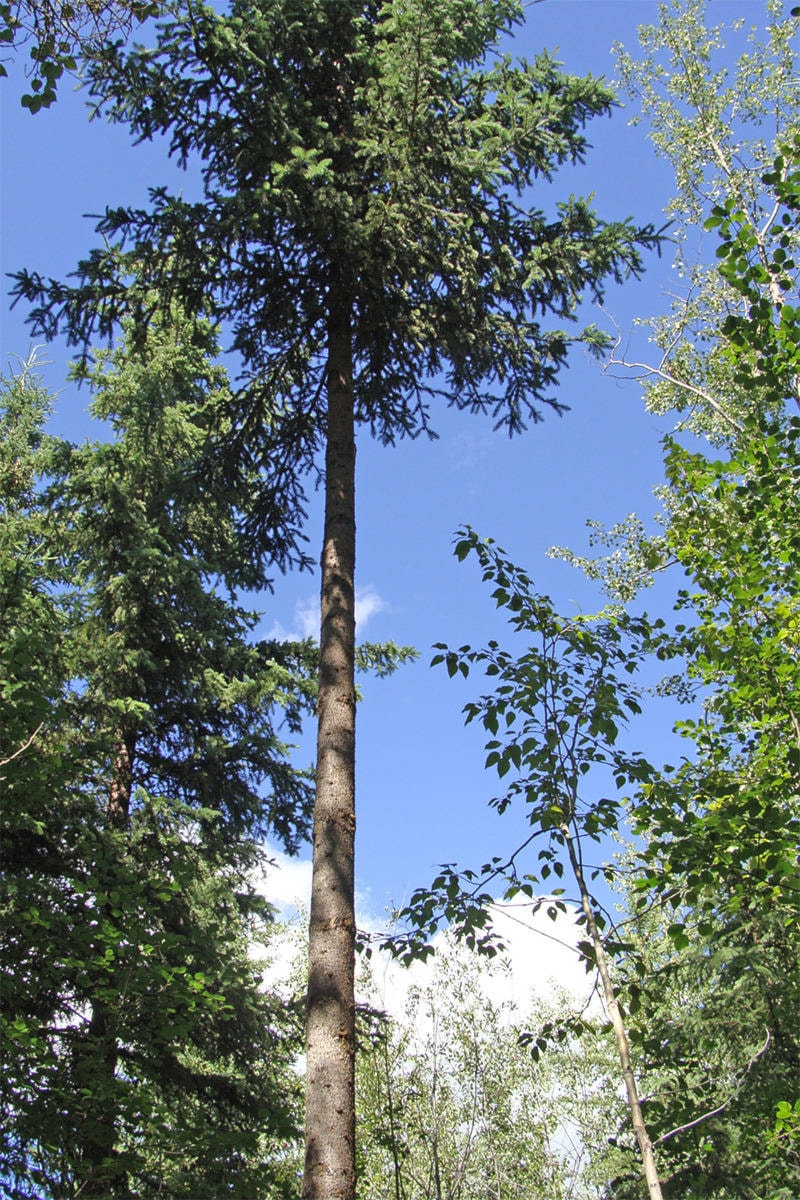Forest land often needs some human intervention to maximize a range of forest values. I was recently invited to see some examples of forest stand improvement projects on private land near Rose Lake. After many years working in the forest industry, Rick McLeod has been doing some thinning and pruning trials on his spruce and pine stands. He was thinking about fertilization options and was looking for some advice about how it might improve the stand yield.
During my visit I admitted not having much experience with fertilization of pine stands but a few days later I was able to find a good resource about some work done near his place. An article by R.P. Brockley about thinning and fertilization on the growth and development of young lodgepole pine showed tree radial growth increased with thinning intensity, whereas per-hectare growth was greatest at the highest stand density.
“Fertilizer effects varied across the range of residual densities tested. Tree and stand volume gains following fertilization were less, in both relative and absolute terms, at 600 trees/ha than at 1100 or 1600 trees/ha. Vigorous response of understory vegetation to nutrient additions (and strong competition for water and nutrients) may have reduced the effectiveness of fertilization on tree growth at 600 trees/ha relative to higher stand densities.”
While pruning was not specifically mentioned in the article it is critical in achieving maxim value of the end products of a spacing trial. While low tree densities will produce some of the largest diameter trees these trees also have more large diameter branches which impact on the lumber quality.
As indicated in the government field guide, “Artificial pruning removes the lower dead and living branches to hasten the formation of clear wood. Clear wood is produced naturally, but slowly, under the right conditions. Natural pruning occurs in second growth forests as crowns close and lower branches are shaded. This cycle of shading, death, and loss of branches is not completed until late in a tree’s life cycle. The completion of branch loss by natural means is usually later than projected harvest ages. The degree and speed of natural pruning vary with stand density and species. To produce clear wood in rotations of less than 100 years, artificial pruning is necessary.
The death of lower tree branches is a normal consequence of inter-tree competition and self shading. Dead branches remain attached until they break off or rot. If dead branches are pruned, the tree produces clearwood decades sooner than is possible without pruning. As the tree grows after pruning, the pruning scar is covered over. The total time to heal the wound depends on the rate of diameter growth of the tree, branch diameter and other factors. Long branch stubs heal over more slowly. Live knots generally heal over sooner than dead knots.”
The timing and amount of branches removed per lift (pruning operation) is critical. Too many live branches removed at one time can reduce the trees productivity until the canopy is regrown and sloppy branch removal can impede the healing process and take longer to achieve clear wood. Rick’s spruce and pine stands showed he was aware of all the proper procedures involved with forest improvement projects.
As well as improving the yield of his stand he also improved the wild fire protection and the recreation value of his property along with the satisfaction that it was the right thing to do.
Jim Hilton is a professional agrologist and forester who has lived and worked in the Cariboo Chilcotin for the past 40 years. Now retired, Hilton still volunteers his skills with local community forests organizations.
